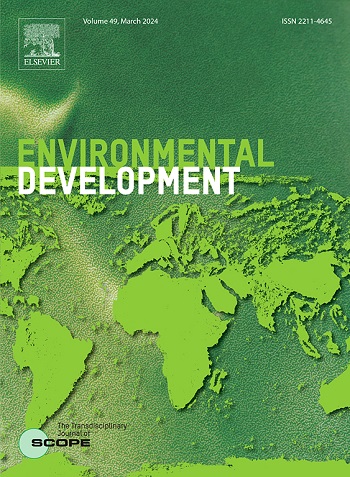Strategic insights for sustainable tourism development in Kashmir Valley: SWOT and QSPM analysis
IF 4.7
2区 环境科学与生态学
Q2 ENVIRONMENTAL SCIENCES
引用次数: 0
Abstract
Promoting sustainable tourism entails fostering environmentally responsible growth that endures, achieving a delicate balance between honoring the rich history, preserving culture, and navigating the challenges posed by diverse altitudes in the Kashmir Valley. A knowledge test was created to measure the stakeholders' understanding of sustainable tourism to guide further analysis with the selected stakeholders. Our research delved into this objective by conducting real-world analysis, including questionnaires and interviews with key stakeholders. A Quantitative Strategic Planning Matrix (QSPM) was utilized and built on the foundation of the SWOT (Strengths, Weaknesses, Opportunities, and Threats) framework to drive sustainable tourism effectively. The results underscore the intricate landscape the valley operates within, revealing varied levels of stakeholder satisfaction across different aspects. Understanding these nuanced perspectives is crucial to charting a sustainable course for the region. In this light, the existing strategies aimed at managing the area, with a focal point on promoting sustainable tourism. The emphasis is on recognizing and tackling the challenges while seizing the weaknesses and threats that could impact the industry's reputation for excellent service and environmental stewardship. It is about aligning strategies to ensure a harmonious coexistence between tourism growth and the natural, cultural, and social fabric of this adorable valley.
克什米尔山谷旅游业可持续发展的战略见解:SWOT 和 QSPM 分析
促进可持续旅游业需要促进对环境负责的持久增长,在尊重丰富的历史、保护文化和应对克什米尔山谷不同海拔所带来的挑战之间实现微妙的平衡。我们设计了一个知识测试来衡量利益相关者对可持续旅游业的理解,以指导与选定利益相关者的进一步分析。我们的研究通过对现实世界进行分析,包括对主要利益相关者进行问卷调查和访谈,深入探讨了这一目标。在 SWOT(优势、劣势、机会和威胁)框架的基础上,采用了定量战略规划矩阵(QSPM),以有效推动可持续旅游业的发展。结果凸显了山谷所处的错综复杂的环境,揭示了利益相关者在不同方面的不同满意度。了解这些微妙的视角对于规划该地区的可持续发展路线至关重要。有鉴于此,现有战略旨在管理该地区,重点是促进可持续旅游业。重点在于认识和应对挑战,同时抓住可能影响旅游业优质服务和环境管理声誉的弱点和威胁。这就是要调整战略,确保旅游业的发展与这一可爱山谷的自然、文化和社会结构和谐共存。
本文章由计算机程序翻译,如有差异,请以英文原文为准。
求助全文
约1分钟内获得全文
求助全文
来源期刊

Environmental Development
Social Sciences-Geography, Planning and Development
CiteScore
8.40
自引率
1.90%
发文量
62
审稿时长
74 days
期刊介绍:
Environmental Development provides a future oriented, pro-active, authoritative source of information and learning for researchers, postgraduate students, policymakers, and managers, and bridges the gap between fundamental research and the application in management and policy practices. It stimulates the exchange and coupling of traditional scientific knowledge on the environment, with the experiential knowledge among decision makers and other stakeholders and also connects natural sciences and social and behavioral sciences. Environmental Development includes and promotes scientific work from the non-western world, and also strengthens the collaboration between the developed and developing world. Further it links environmental research to broader issues of economic and social-cultural developments, and is intended to shorten the delays between research and publication, while ensuring thorough peer review. Environmental Development also creates a forum for transnational communication, discussion and global action.
Environmental Development is open to a broad range of disciplines and authors. The journal welcomes, in particular, contributions from a younger generation of researchers, and papers expanding the frontiers of environmental sciences, pointing at new directions and innovative answers.
All submissions to Environmental Development are reviewed using the general criteria of quality, originality, precision, importance of topic and insights, clarity of exposition, which are in keeping with the journal''s aims and scope.
 求助内容:
求助内容: 应助结果提醒方式:
应助结果提醒方式:


